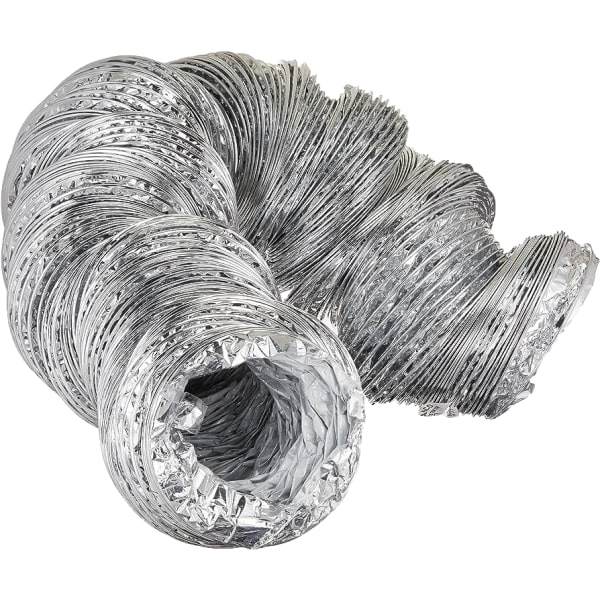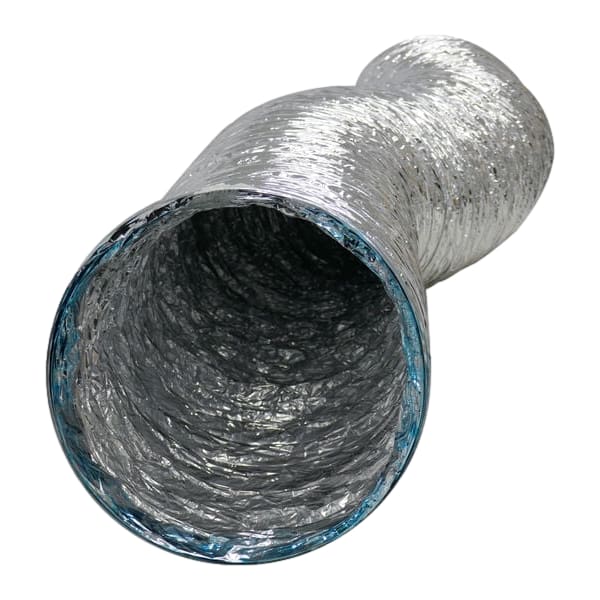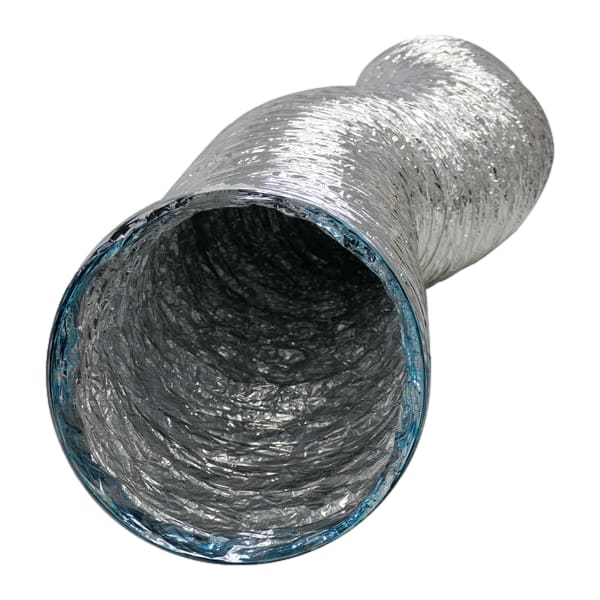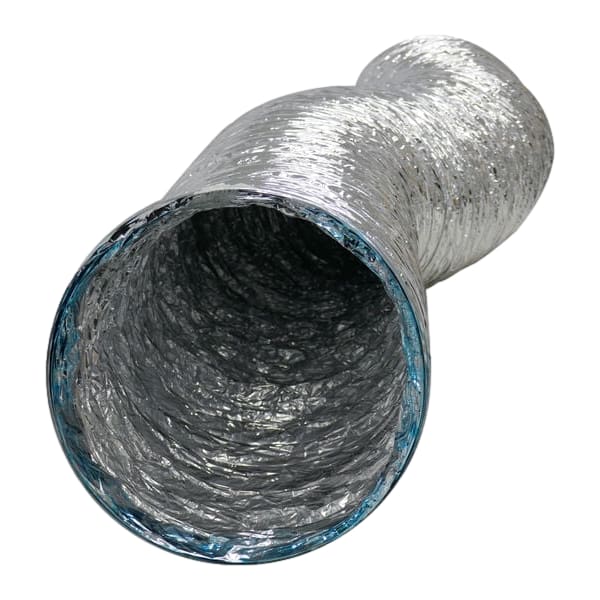Nude Flexible Duct
Plain, Nude Core Flexible Duct Suitable for non conditioned air
Below are some common questions we have received concerning Flexible Duct
1. What is Flexible Duct?
A flexible, tubular passage for supply, return and exhaust air used in heating, ventilation and air conditioning systems. It can replace galvanized pipe and helps reduce heat and cool loss and condensation build up.
2. How do you connect pieces of duct together?
General guidelines: Peel back jacket and insulation from core. Butt two cores together on a standard metal sleeve (joiner). Tape cores together with at least 2 wraps of duct tape. Secure with 2 clamps. Pull jacket and insulation back over cores. Tape jackets together with at least 2 wraps of duct tape.
3. What is the temperature range for Flexible Duct?
-30°C to + 120°C
4. What is an R-Factor?
R-Factor is the thermal resistance. A higher R Value represents a better insulating material. Uninsulated duct does not have an r-value rating. Airflow offers Flexible Insulated Duct with r-value rating of 0.6.
5. Can Airflow Flexible Duct be exposed to ultraviolet sunlight?
Uninsulated Duct is fine, Insulated Interlock Flex Duct uses a non-metallic outer barrier (jacket) which may degrade if ducts are installed outside in direct sunlight or where direct sunlight enters, e.g. turbine vents, sky lights, canopy windows, etc. Our Insulated Wire Flex Duct outer barrier is designed to withstand the exposure to UV light.
6. Can Airflow Flexible Duct be used to vent clothes dryers?
No. Exhaust duct for domestic clothes dryers should be constructed of metal or PVC and shall have a smooth interior finish.
7. Can Airflow Flexitube Duct be used for bathroom/shower exhaust fans?
Yes. We recommend that you use insulated flex duct in longer vent run applications to assist in keeping the humidity from condensing inside the duct and to help prevent the pooling of water, which can damage the core.
8. What type of duct is best for venting a range hood?
Ventilation systems are required year around. Most people associate ventilation with heat; however, of the two major destructive forces at work, moisture, not heat, is the most destructive. Since winter air is drier, it absorbs moisture from your building. This moisture produces mildew, rotting conditions damaging wood plaster or paint. Insulation also becomes wet and provides less resistance to heat loss.
9. Can screws be used to fasten flexible duct core?
Airflow does not recommend screws be used to fasten the polyester core of the air ducts because they would tear or hole the foil.
10. What materials should be used when hanging or supporting flexible duct?
When hanging, or supporting flexible duct, there are several different materials which may be used. Airflow – The HVAC Shop doesn't specify a material; hanging material should be of sufficient width to prevent any restriction of the internal diameter of the duct when the weight of the supported section rests on the hanging material
$28.70
$28.70
$26.09
$29.57
$37.40
$57.40
$62.61
$80.00








